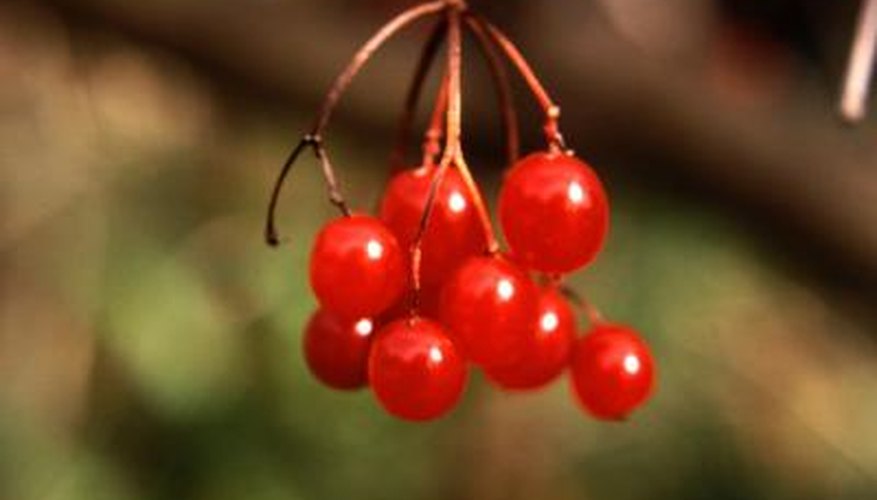Viburnum is the scientific name for a large group of about 150 plants, including deciduous shrubs, small trees and evergreen shrubs. These ornamental plants grow between 2 and 30 feet tall and produce scented blossoms in shades of pink and white. Viburnum plants are susceptible to certain disorders, including rust disease. Prompt treatment will help remove the damage, eliminate the rust and encourage healthy blossoms.
Examine the leaves on your viburnum to provide an accurate diagnosis of rust disease. Rust is a fungal disease that causes blotchy discolourations to form on the surface of the viburnum leaves. Look for multiple leaves with numerous yellow, red, black or brown spots.
- Viburnum is the scientific name for a large group of about 150 plants, including deciduous shrubs, small trees and evergreen shrubs.
- Rust is a fungal disease that causes blotchy discolourations to form on the surface of the viburnum leaves.
Trim off the damaged stems and branches that contain rust spots, making your pruning cuts slightly inside the area of healthy growth to ensure complete removal. Prune the remainder of your viburnum plant to thin out areas of thick, dense foliage. Lack of sunlight and air circulation increase the risk of rust disease. Prune neighbouring shrubs and overhanging branches from overhead trees that create areas of dense shade on the viburnum. An inadequate amount of sunlight is another common risk factor in the development of rust disease. Remove all traces of cut vegetation from the site.
- Trim off the damaged stems and branches that contain rust spots, making your pruning cuts slightly inside the area of healthy growth to ensure complete removal.
Dig out any grass, bedding plants or weeds growing around the base of the viburnum. Rust fungi spores can thrive in these areas of low-growing plants and infect your viburnum. Rake the remaining lawn area under the canopy to remove dead leaves and grass clippings.
Apply a systemic or contact fungicide that contains mancozeb or phosphoric acid. Mix and apply the fungicide treatment on a dry, calm day according to the label instructions. Apply the fungicide to both the inner and outer sections of foliage, as well as adjacent shrubs and neighbouring plants.
Water your viburnum correctly, keeping the moisture off the foliage. Although viburnums prefer rich, moist soil, continual dampness increases the risk of fungal diseases. Allow the surface soil to dry slightly before supplemental watering.
WARNING
Avoid placing lawn sprinklers near a viburnum. The excess moisture on their leaves increases their risk of developing rust disease.
